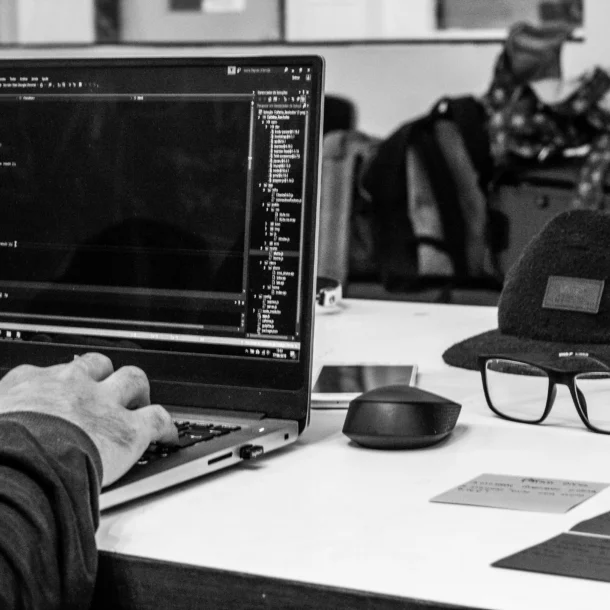
The Impact of Color Psychology in Web Design
There are many things that make a website look good. The images on one site can draw you in. The font play in another makes your jaw drop.
Additionally, it uses color to bring a website to life. A web designer uses color to improve the user experience. In this way, a designer can guide a user down the conversion funnel or subtly nudge them toward a purchase.
In a design like that, does color psychology in web design even matter? What does it add to the site? What is it and how does it work? Throughout this article, I will explain how color theory can help us create better white label websites.
What is Color Psychology?
Color psychology examines how colors affect human emotions, perceptions, and behaviors. In web design, it can greatly influence how users perceive your brand, product, or service, as well as how they interact with your website.
In order to maximize your site’s web design, you need to understand the psychology of color. Your customers will be more likely to take action if you use the right colors. Customers are more likely to buy when they are captivated by color.
Brands and what they stand for are often defined by their colors. In persuasion, color psychology plays an important role. Keep in mind that persuasion is not coercion, manipulation, or simply pushing. It’s about changing attitudes to encourage customers to act. A conversion or purchase would be the action.
1. Red
It makes sense that red is perceived as a color that creates urgency. In marketing materials that shout huge discounts for a limited time only, red does attract attention and can make people’s hearts race. Whenever marketers or businesses conduct sales or offer tempting offers on a regular basis, red is the best color to create a sense of urgency.
2. Orange
In a site design, orange adds vibrancy at a lower rung than red, while still conveying warmth, energy, and playfulness. The orange accents on the SHARE website acted as subliminal navigation toward buttons, must-know information, and conversion areas.
3. Blue
The color blue is often associated with calmness. Blue is believed to lower heart rate and blood pressure. According to color psychology, blue represents stability, trust, security, intelligence, and reliability in business. Blue is the most popular and most commonly used color in web design today, with nearly every internet user immediately thinking of x blue-themed websites off the top of their head.
4. Yellow
Websites that want to convey a sense of fun, cheerfulness, and optimism use yellow as their primary color. All of that is done easily with yellow. Yellow is the color of sunshine, after all. Yellow is even said to make people feel younger.
5. Green
It is the most relaxing color in your arsenal with a long list of positive associations; the ones above are just a few. Almost any industry can benefit from green, which stands out without being too stimulating.
6. Gray
A subdued, neutral color that can convey both strength and calm, gray is best utilized when paired with similar elements of different colors (gray-filled imagery on white backgrounds, gray prompt boxes next to contrasting color boxes, etc.). If black is too bold or the blank/white space is too much, go gray!
7. Pink
Pink is a good color if your target market consists mostly of women. Fun and romance are associated with the color. The color pink is associated with youthful femininity. Bubble gum and innocence come to mind. Ideal for websites that harken back to the old days or target female audiences. However, you can use pink to appeal to both men and women if you are targeting a younger crowd.
8. Purple
Despite its luxurious nature, purple is also complex and oh-so-appealing once figured out; it’s all in the shade and how you use it. Purple shades make for great contrast, but their deepness and smoothness require balance with other elements on the page. Using lighter shades can feel springtime bright and airy, if not romantic, but requires the correct color contrast pairings to avoid textual strain.
9. White
Regardless of how you complement or dirty white, it will always be the universal web color. As versatile as its shades, it also comes in ivories and soft creams. White can be paired with any other color to increase impact, engagement, and memorability. Your WordPress site is a blank canvas waiting for you!
Developing the Best Color Scheme for Your Website
When starting a web project, it is often necessary to choose a color scheme: a set of colors that work well together. It can be painful to look at a bad color scheme. How do you choose colors?
Color Harmony Basics
- Complementary color schemes
Using complementary colors creates a powerful contrast between two opposite colors. In this scheme, web designers use different colors to set the background of a website while putting emphasis on the content of the website.
2. Monochromatic color schemes
In monochromatic color schemes, the same color is represented by three different values.
3. Split complement
The split complement consists of a color and its two adjacent tertiary colors. There is a high degree of contrast in this color scheme, but it is not as extreme as the complementary scheme. Harmony is created by it.
4. Triadic color schemes
On the color wheel, triadic color schemes have three equally spaced colors. The benefit of this color scheme is that you can use one color for the background while the remaining two colors can be used to highlight the content and other important areas.
5. Analogous color schemes
On the color wheel, analogous color schemes use three adjacent colors. Often found in nature, this scheme is pleasing to the eye because, because they match well, they create a comfortable atmosphere.
6. Tetradic color schemes
Two complementary colors are used in tetradic color schemes. The color scheme works best when one color dominates. Make sure your warm and cool colors are balanced.
Final Thoughts
Utilizing color psychology in web design is pivotal for creating a compelling user experience. Colors have the power to evoke specific moods or impressions, enhancing the overall appeal of a website. However, choosing the wrong color scheme can lead to perceptions of unprofessionalism and mistrust. Establishing a reliable and trustworthy online presence is crucial for user confidence. Consequently, website color psychology remains a major concern for web designers, influencing decisions on website color schemes and palettes. You can also opt for a Charlotte website design agency if you’re still uncertain about the impact of color psychology.












